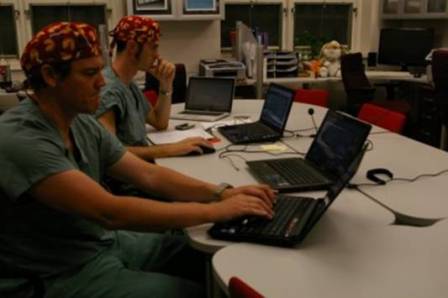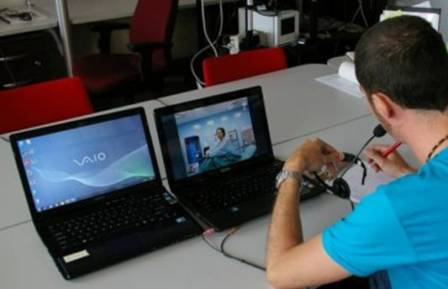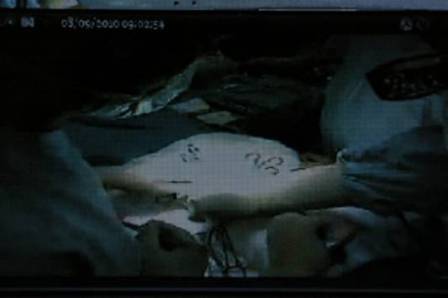World’s first remote anaesthesia across continents
10 Sept 2010
A world first was achieved by McGill University’s Department of Anesthesia on August 30, 2010, when they treated patients undergoing thyroid gland surgery in Italy remotely from Montreal, Canada.
This achievement was the result of a collaboration between McGill University and the Department of Anaesthesia of Pisa University.
The approach is part of new technological advancements, known as teleanaesthesia, which involves a team of engineers, researchers and anaesthesiologists who will ultimately apply the drugs intravenously which are then controlled remotely through an automated system.
“The practice has obvious applications in countries with a significant number of people living in remote areas, like Canada, where specialists may not be available on site,” said McGill University team leader Dr Thomas Hemmerling. “It could also be used for teaching purposes, allowing the resident to perform tasks without the physical presence of a tutor, thus increasing his or her confidence level.”
Four strategically placed video cameras monitored every aspect of patient care in Pisa, Italy, in real time. Ventilation parameters (such as the patient’s breathing rate), vital signs (ECG, heart rate, oxygen saturation) and live images of the surgery are monitored by each camera, with the fourth used for special purposes.
A remote computer station (called the ‘anaesthesia cockpit’) is required, as is a workstation that handles the audio-video link between the two centres. “Obviously, local anaesthesiologists can override the process at any time,” Hemmerling explained. Prior to the operation, an assessment of the patient’s airway and medical history is also performed via videoconferencing.
The researchers are also looking at the possibility of preoperative assessment of patients at home. It used to be that invasive blood tests or other tests were required in preparation for many surgeries, but that’s no longer the case.
Many patients take very long journeys and often wait hours to see an anaesthesiologist who will ask them specific questions, but videoconferencing could eliminate these logistical problems and probably reduce the preoperative stress of the patients coming into the hospital before surgery. “The next steps will be to confirm the results of this pilot experience with further studies,” Hemmerling said.
Photos of the cross-continental teleanaesthesia

Anaesthesia cockpit in Montreal controlling
anaesthesia in Pisa.
Credit: Dept. of Anaesthesia, McGill
University, Montreal.

Video-real stream in Montreal from patient
monitoring in Pisa.
Credit: Dept. of Anaesthesia, McGill
University, Montreal.

Preoperative remote patient assessment.
Credit: Dept. of Anaesthesia, McGill University, Montreal

Live stream from surgical site taken from
computer screen.
Credit: Dept. of Anesthesia, McGill University,
Montreal.
Video of Dr Hemmerling explaining an automated anaesthesia system
For more information on new anaesthesia technology being developed at McGill University see: www.newanesthesia.com